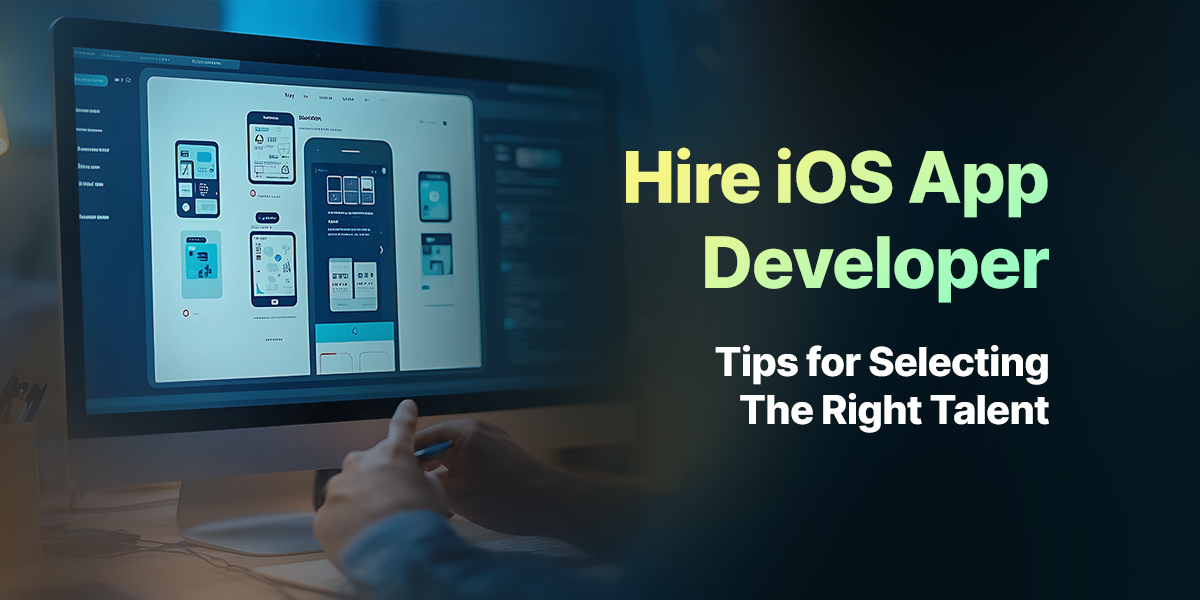Hire iOS App Developer: Tips for Selecting the Right Talent

Strong 8k brings an ultra-HD IPTV experience to your living room and your pocket.
Introduction: Why Hiring the Right iOS Developer Matters
In today’s mobile-first world, a polished iOS app can be a game-changer for your business. iPhones and iPads hold significant market share in key demographics, and users expect smooth performance, intuitive design, and seamless updates. To deliver on those expectations, you need to hire iOS app developer talent that combines technical expertise with a user-centered mindset.
Finding the right developer is about finding someone who understands your vision, embraces your brand values, and adapts quickly to evolving requirements. A strong iOS developer brings deep knowledge of Swift, Objective-C, Apple’s Human Interface Guidelines, and the entire iOS ecosystem, from App Store processes to privacy rules.
Moreover, the right hire can save you time and money. They write maintainable code, foresee potential roadblocks, and implement best practices from the start. This leads to fewer costly rewrites and a faster time-to-market. And because iOS updates and new devices arrive each year, you need someone who can future-proof your app and keep it running flawlessly across the latest iOS versions.
In this guide, we’ll cover practical tips to help you hire iOS app developer talent that fits your project, budget, and culture. You’ll learn how to evaluate technical skills, gauge communication style, and ensure your new teammate can drive long-term success. With the right approach, you’ll build an iOS app that delights users and keeps them coming back.
Key Qualities to Look for When You Hire an iOS App Developer
1. Mastery of Core iOS Technologies
A top iOS developer must be fluent in Swift and, ideally, familiar with Objective-C. They should know how to:
- Use UIKit and SwiftUI for building interfaces.
- Implement Core Data, Realm, or other persistence frameworks.
- Integrate with RESTful APIs using URLSession, Alamofire, or Combine.
- Manage dependencies with CocoaPods, Carthage, or Swift Package Manager.
2. Solid Understanding of Apple’s Guidelines
Apple’s Human Interface Guidelines (HIG) and App Store Review Guidelines shape every successful app. Your developer should:
- Design UI/UX that feels native to iOS.
- Follow best practices for navigation, gestures, and accessibility.
- Prepare App Store metadata, in-app purchase setup, and TestFlight testing.
- Navigate the App Store submission process and troubleshoot rejections.
3. Proven Track Record and Portfolio
Review candidates’ past work to see real-world examples of:
- App stability and performance on multiple devices.
- Innovative features (e.g., ARKit, Core ML, Siri shortcuts).
- User-centric design and localization.
- App Store ratings and user reviews.
4. Strong Problem-Solving Skills
iOS development often involves tackling device fragmentation, memory constraints, and security requirements. Seek developers who:
- Can debug effectively using LLDB, Instruments, and crash logs.
- Write clean, modular code with unit tests (XCTest).
- Optimize for performance, battery life, and network usage.
5. Excellent Communication and Collaboration
Building an app is a team effort. The right developer should:
- Communicate clearly in standups, sprint planning, and code reviews.
- Translate complex technical concepts into plain language for stakeholders.
- Embrace feedback and iterate quickly.
- Use version control effectively (Git, GitHub/GitLab).
Beyond Coding: Cultural Fit & Growth Mindset
When you hire iOS app developer, technical prowess is only half the picture. The best hires also align culturally and show a commitment to continuous learning.
Cultural Alignment
- Do they share your company’s values whether that’s innovation, customer obsession, or work-life balance?
- Look for traits like ownership, transparency, and respect.
Continuous Improvement
- Top developers stay current with Apple’s annual WWDC announcements.
- They experiment with new frameworks (e.g., Swift Concurrency, WidgetKit) in side projects.
- They participate in local meetups or online communities, sharing insights and solutions.
Mentorship and Team Growth
- Can they guide junior developers?
- Do they write clear documentation and enforce coding standards?
- A developer who uplifts the entire team accelerates your product’s quality and velocity.
By focusing on cultural fit and a growth mindset, you ensure your new iOS developer will thrive and help your organization thrive long after the first release.
Practical Steps to Find and Evaluate Candidates
1. Write a Clear Job Description
- Define responsibilities: Outline day-to-day tasks (feature development, code reviews, CI/CD).
- Specify must-haves vs. nice-to-haves: Prioritize core skills (Swift, UIKit/SwiftUI) and list secondary tools (Combine, Core ML).
- Highlight culture and benefits: Mention team size, collaboration style, and learning opportunities.
2. Source from the Right Channels
- Leverage niche communities: Post on iOS Slack groups, GitHub Discussions, or Swift forums.
- Tap local networks: Partner with Houston tech meetups and university career services.
- Use referrals: Offer a referral bonus to current employees or industry contacts.
3. Screen with Technical Assessments
- Custom coding challenges: Design tasks that mimic your real-world problems (e.g., dynamic table views, offline data sync).
- Automated review: Use tools like Codility or GitHub Classroom to pre-score submissions.
- Pair-programming session: Schedule a 45-minute live session to see their thought process and communication.
4. Conduct Behavioral Interviews
- STAR questions: Ask about a time they handled tight deadlines, incorporated user feedback, or refactored legacy code.
- Soft-skill probes: Inquire how they resolve team conflicts, mentor juniors, or manage scope changes.
- Problem exploration: Present a past project issue and ask how they would approach it differently.
5. Run a Small Paid Pilot Project
- Realistic scope: Assign a mini-feature that touches UI, networking, and persistence.
- Clear deliverables: Define success criteria and acceptance tests before starting.
- Feedback loop: Provide mid-project check-ins and a final review call to evaluate collaboration and craftsmanship.
6. Verify References and Cultural Fit
- Targeted reference questions: Ask about reliability, communication clarity, and adaptability to changing requirements.
- Team compatibility: Arrange a casual meet-and-greet with key stakeholders to assess rapport.
- Red-flag indicators: Look for consistent delays, evasive answers, or lack of enthusiasm.
By following these enhanced steps, you’ll systematically hire iOS app developer talent who not only codes well but also fits your team and your goals.
Onboarding and Retention Strategies
1. Structured Onboarding
- Comprehensive Roadmap: Share a step-by-step guide covering codebase walkthrough, tech stack overview, environment setup, and team processes.
- Mentor Pairing: Assign a senior developer as a daily touchpoint for the first 4–6 weeks to answer questions, review code, and model best practices.
- Early Wins: Identify 2–3 small, meaningful tasks (bug fixes, UI tweaks) that align with project goals. Completing these builds confidence and familiarity.
- Onboarding Checklist: Use a shared document listing access credentials, required trainings, and initial deliverables. Review progress weekly in one-on-ones.
2. Invest in Professional Development
- Learning Budget: Allocate a set annual allowance per developer for online courses, books, and certifications (e.g., Apple’s Swift certifications).
- Conference & Workshop Support: Sponsor attendance at key iOS events (WWDC, local meetups) and schedule “sharing sessions” post-event to spread knowledge.
- Innovation Time: Dedicate 5–10% of each sprint for “hack days” or proof-of-concept projects. Encourage experimentation with SwiftUI, ARKit, Combine, etc.
- Peer Learning: Host monthly “lunch-and-learns” where team members present on new frameworks, patterns, or libraries they’ve explored.
3. Foster a Collaborative Culture
- Constructive Code Reviews: Implement a clear template focusing on readability, performance, and adherence to style guides. Keep reviews under 200 lines to maintain quality feedback.
- Celebrate Milestones: Publicly recognize launches, major feature releases, and positive App Store reviews in team meetings or on your Slack #kudos channel.
- Regular Feedback Cycles: Schedule bi-weekly one-on-ones that balance project updates with personal growth discussions. Set concrete action items and follow up each meeting.
- Cross-Functional Syncs: Hold monthly demos with design, QA, and product teams to share progress, solicit input, and align on roadmap adjustments.
- Career Path Planning: Co-create a 6- to 12-month development plan outlining skill targets, leadership opportunities, and promotion criteria.
These strategies ensure new iOS hires ramp up quickly, stay motivated, and feel invested in, boosting both productivity and retention.
Conclusion: Secure Your iOS App’s Success by Hiring the Right Developer
Hiring the right iOS developer sets your app and your business up for long-term success. They bring the technical skills to build a standout app and the soft skills to collaborate effectively. By emphasizing cultural fit, continuous learning, and thorough evaluation, you can hire iOS app developer talent who drives innovation and delivers real value.
Remember, hiring is just the start. Structured onboarding, ongoing training, and a supportive culture keep your developer engaged and growing. With these strategies, you’ll not only launch a great iOS app but also build a team capable of sustaining and evolving it as your users’ needs and Apple’s platform continue to evolve.
Note: IndiBlogHub features both user-submitted and editorial content. We do not verify third-party contributions. Read our Disclaimer and Privacy Policyfor details.







